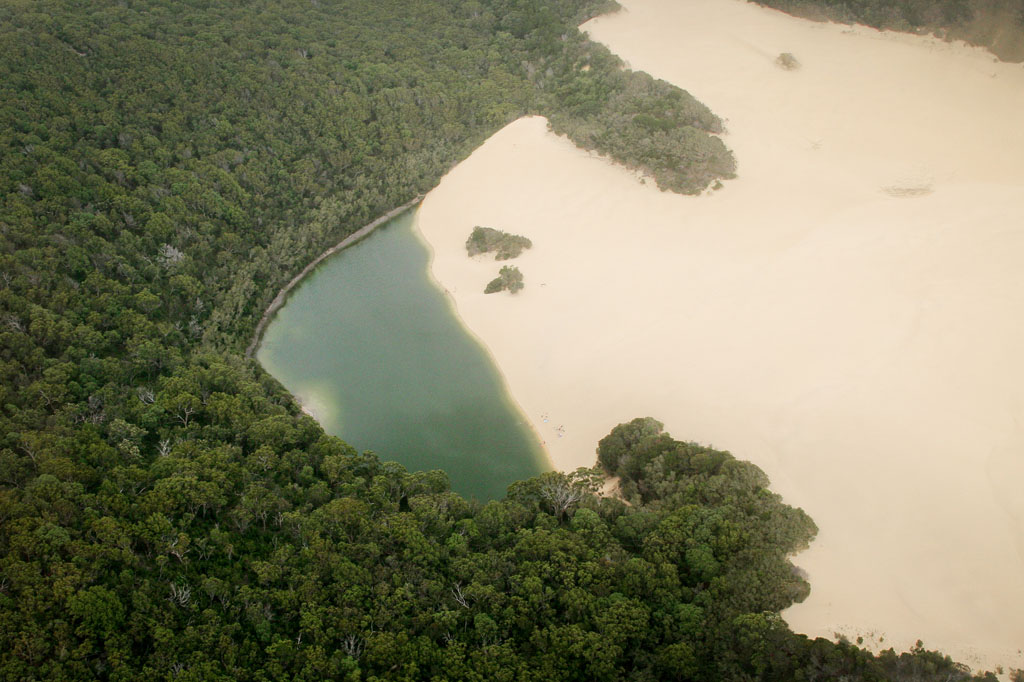Fraser Island is a remarkable natural setting. The United Nations Educational, Scientific and Cultural Organization (UNESCO) even recognized it as a World Heritage Site. In granting this designation, UNESCO said,
“Fraser Island lies just off the east coast of Australia. At 122 km long, it is the largest sand island in the world. Majestic remnants of tall rainforest growing on sand and half the world’s perched freshwater dune lakes are found inland from the beach. The combination of shifting sand-dunes, tropical rainforests and lakes makes it an exceptional site.”
Characteristics
Fraser is a good-sized island but it’s hardly one of the largest. In fact it’s only the fourth largest even in Australia. However, remarkably, nothing but sand forms the entire island. Forces of nature shaped it over thousands of years. Wind and waves pushed dunes on top of dunes, held in place by the roots of lush vegetation clinging to the surface.

Until quite recently the island sustained a logging and a sand mining industry but Australia now protects this wilderness as part of its Great Sandy National Park, just up the coast from Noosa Heads. The island includes a 75 mile beach of packed sand that provides a smooth surface for driving or even an aircraft runway. Of course, cars must yield the right-of-way to oncoming aircraft in case you ever find yourself in that situation.
Perched Dune Lakes
However the most interesting aspect may be its abundance of unusual freshwater lakes.
Typical Perched Lakes

Lake Boomanjin (map) is an example of a perched dune lake. About eighty of them exist on the entire planet and forty of them occur on Fraser Island. A perched dune lake forms when wind blows an indentation in the sand that then gradually fills with decaying vegetation. So, over time the decaying organic matter creates a watertight mat. That eventually permeates the sand to form something similar to concrete, almost like a swimming pool. Lake Boomanjin is the largest lake of this type in the world at 190 hectares. The world’s highest perched dune lake sits elsewhere on Frasier Island; Boomerang Lake at 130m above sea level.
Barrage Lakes

Lake Wabby (map) is an example of a barrage lake. Exposed sand on Frasier Island forms into dunes, and the dunes migrate through the power of wind over time. If a dune blows across the path of a stream or another source of water, it acts as a dam and a lake forms behind it. Notice the large dune that created Lake Wabby to the right side of this image.
Window Lakes
Finally, the Manoolcoong Lakes are example of window lakes. These types of lakes form when the wind carves a dent in the sand that extends below the water table. Thus it forms a “window” onto what would ordinarily be a subterranean world. The exposed water table appears on the landscape as a pool.

Leave a Reply